第70章 MONEY OR SIMPLE CIRCULATION(51)
The suspension of cash payments by the Bank of England in 1797,the rise in price of many commodities which followed,the fall in the mint-price of gold below its market-price,and the depreciation of bank-notes especially after 1809were the immediate practical occasion for a party contest within Parliament and a theoretical encounter outside it,both waged with equal passion.The historical background of the debate was furnished by the evolution of paper money in the eighteenth century,the fiasco of Law's bank,the growing volume of value-tokens which was accompanied by a depreciation of provincial bank-notes of the British colonies in North America from the beginning to the middle of the eighteenth century;after which came the legally-imposed paper money,the Continental bills issued by the American Government during the War of Independence,and finally the French assignats,an experiment conducted on an even larger scale.Most English writers of that period confuse the circulation of bank-notes,which is determined by entirely different laws,with the circulation of value-tokens or of government bonds which are legal tender and,although they pretend to explain the phenomena of this forced currency by the laws of metallic currency,in reality they derive the laws of metallic currency from the phenomena of the former.We omit the numerous writers whose works appeared between 1800and 1809and turn at once to Ricardo,because he not only summarises his predecessors and expresses their ideas with greater precision,but also because monetary theory in the form he has given it has dominated British banking law up to the present time.Like his predecessors,Ricardo confuses the circulation of bank-notes or of credit money with the circulation of simple tokens of value.The fact which dominates his thought is the depreciation of paper money and the rise in commodity-prices that occurred simultaneously.The printing presses in Threadneedle Street which issue paper notes played the same role for Ricardo as the American mines played for Hume;and in one passage Ricardo explicitly equates these two causes.His first writings,which deal only with monetary matters,originated at a time when a most violent controversy raged between the Bank of England,which was backed by the Ministers and the war party,and its adversaries around whom were grouped the parliamentary opposition,the Whigs and the peace party.These writings aPpeared as the direct forerunners of the famous Report ot the Bullion Committee of 1810,which adopted Ricardo's ideas.[10]The odd fact that Ricardo and his supporters,who maintained that money was merely a token of value,were called bullionists was due not only to the name of the Committee but also to the content of Ricardo's theory.
Ricardo restated and further elaborated the same ideas in his work on political economy,but he has nowhere examined money as such in the way in which he has analysed exchange-value,profit,rent,etc.
To begin with,Ricardo determines the value of gold and silver,like the value of all other commodities,by the quantity of labour-time materialised in them.[11]The value of other commodities is measured in terms of the precious metals,which are commodities of a determinate value.The quantity of means of circulation employed in a country is thus determined by the value of the standard of money on the one hand,and by the aggregate of the exchange-values of commodities on the other.This quantity is modified by the economy with which payments are effected.[12]Since,therefore,the quantity in which money of a given value can be circulated is determined,and within the framework of circulation its value manifests itself only in its quantity,money within the sphere of circulation can be replaced by simple value-tokens,provided that these are issued in the amount determined by the value of money.Moreover "a currency is in its most perfect state when it consists wholly of paper money,but of paper money of an equal value with the gold which it professes to represent."[13]
So far,therefore,Ricardo has assumed that the value of money is given,and has determined the amount of means of circulation by the prices of commodities:for him money as a token of value is a token which stands for a determinate quantity of gold and is not a valueless symbol representing commodities,as it was for Hume.
When Ricardo suddenly interrupts the smooth progress of his exposition and adopts the opposite view,he does so in order to deal with the international movement of precious metals and thus complicates the problem by introducing extraneous aspects.Following his own train of thought,let us first of all leave aside all artificial and incidental aspects and accordingly locate the gold and silver mines within the countries in which the precious metals circulate as money.The only proposition which follows from Ricardo's analysis up to now is that if the value of gold is given,the amount of money in circulation is determined by the prices of commodities.The volume of gold circulating in a country therefore is simply determined by the exchange-value of the commodities in circulation at the given time.Now supposing that the aggregate amount of these exchange-values decreases,because either a smaller amount of commodities is produced at the old exchange-values,or the same amount of commodities is produced but the commodities represent less exchange-value as a result of an increase in the productivity of labour.